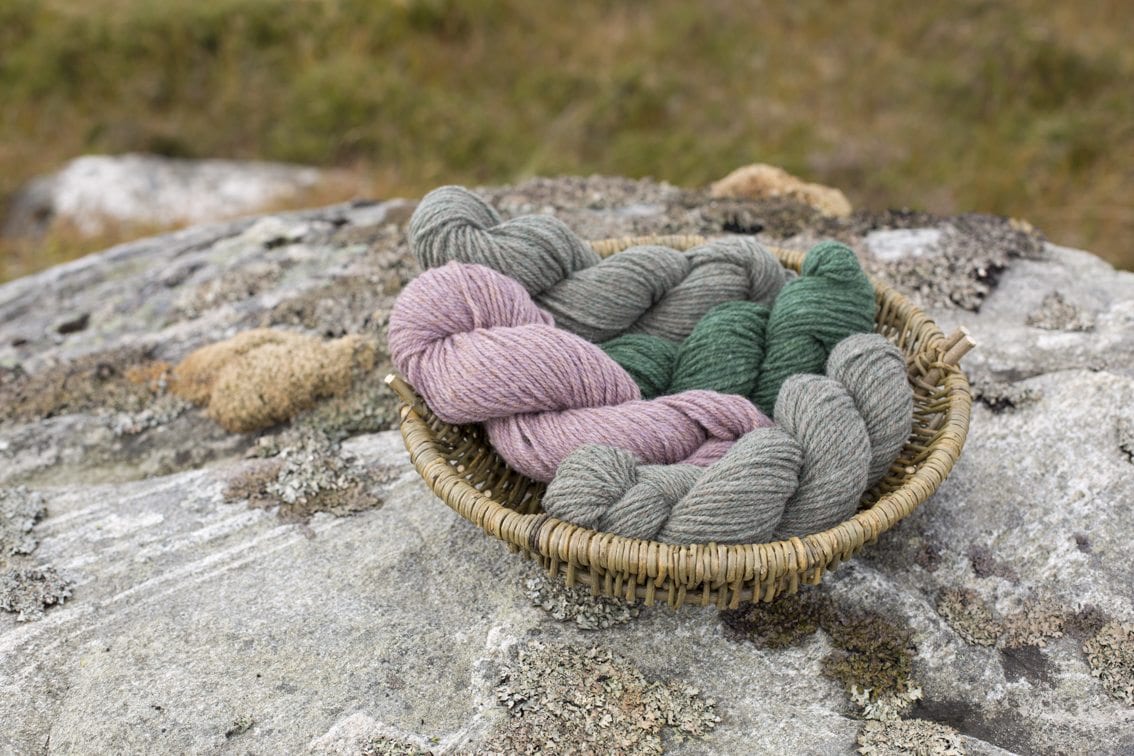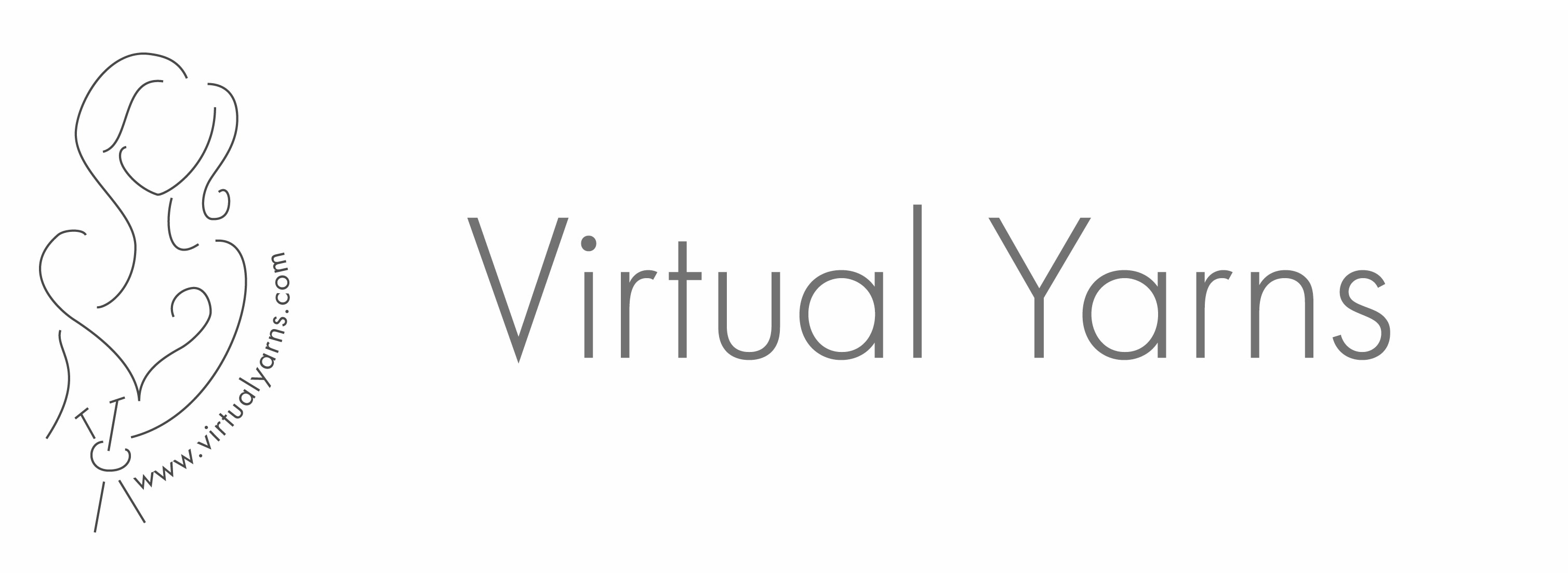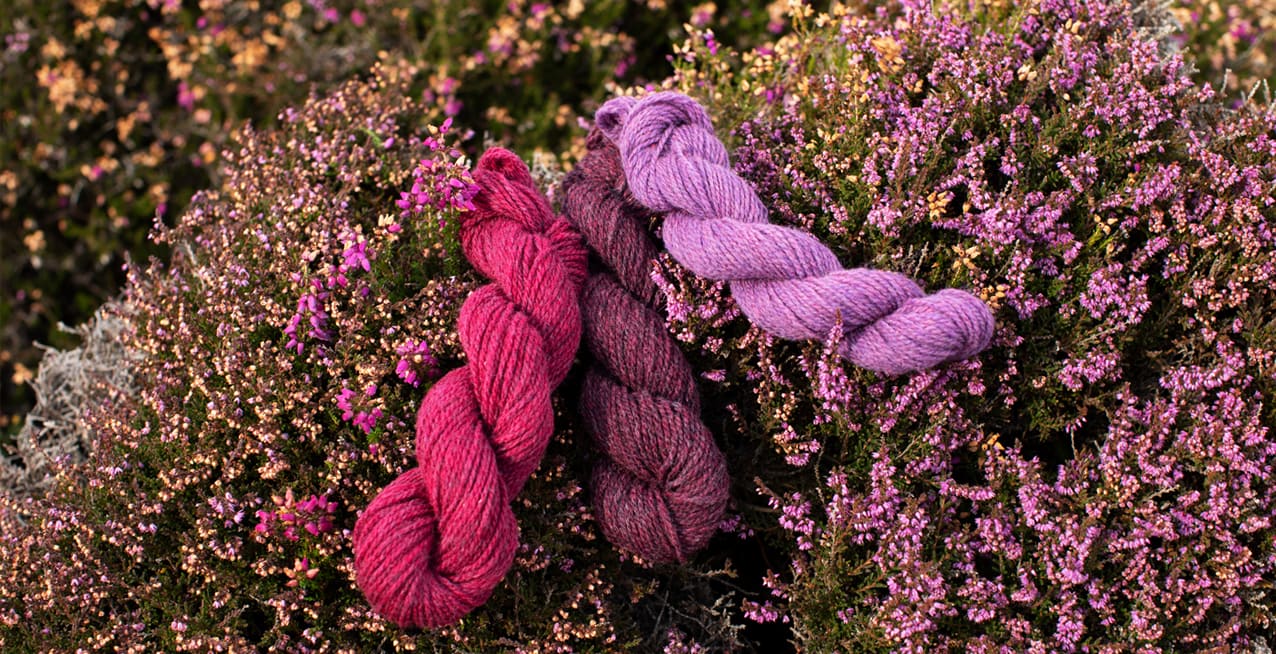
Hebridean Yarn Story
They delight in marled clothes, specially that have long stripes of sundry colours; they love chiefly purple and blue. Their predecessors used short mantles or plaids of divers colours, sundry ways divided; and amongst some, the custom is so observed to this day ...
This quotation from 1582 vividly illustrates the fact that Highland & Island Scots have worked with wool and made cloth for centuries. Ancient implements for combing wool have been found in brochs and other early settlements that date back two-thousand years. By the time of the 16th century quotation above, a cloth known as “quhyte plaiding” constituted a type of currency in the Outer Hebrides, since the native population usually had little or no money. The Hebrideans were entirely self-supporting; cloth was woven for domestic use and any excess was traded or bartered. The rent for their land was often paid in this form. By 1656, woven materials were certainly exported from the Hebrides, as recorded by one Thomas Tucker who wrote a report in that year entitled On the Revenues of Excise and Customs in Scotland. Exports from “the Isles and Westerne parts” were shipped up the Clyde to Glasgow and consisted of “pladding, dry hides, goate, kid and deere skyns, which they sell, and purchase with theyr price such commodityes and provisions as they stand in need of, from time to time.”
The yarn for the cloth was hand-spun by the women from their own sheep. This activity was eulogised by ministers of the church in the Outer Hebrides, who clearly believed that non-spinners were sinners. This is a recurring theme in the Statistical Account of Scotland penned by parish ministers from 1791 to 1799:
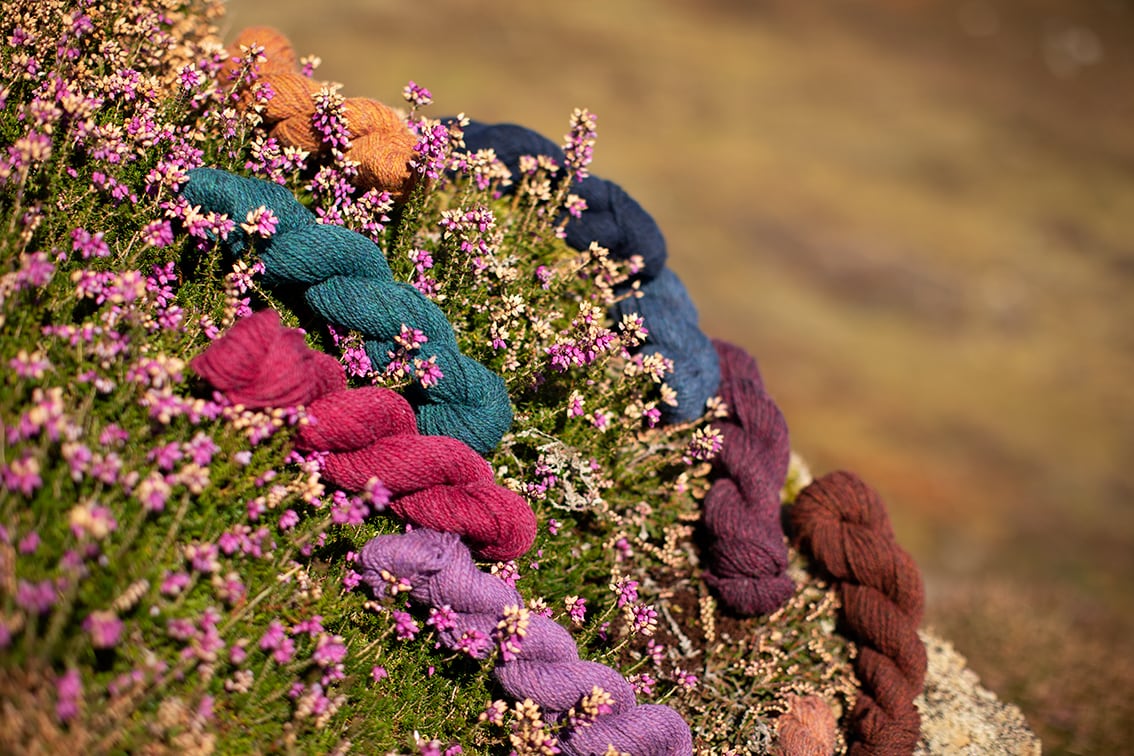
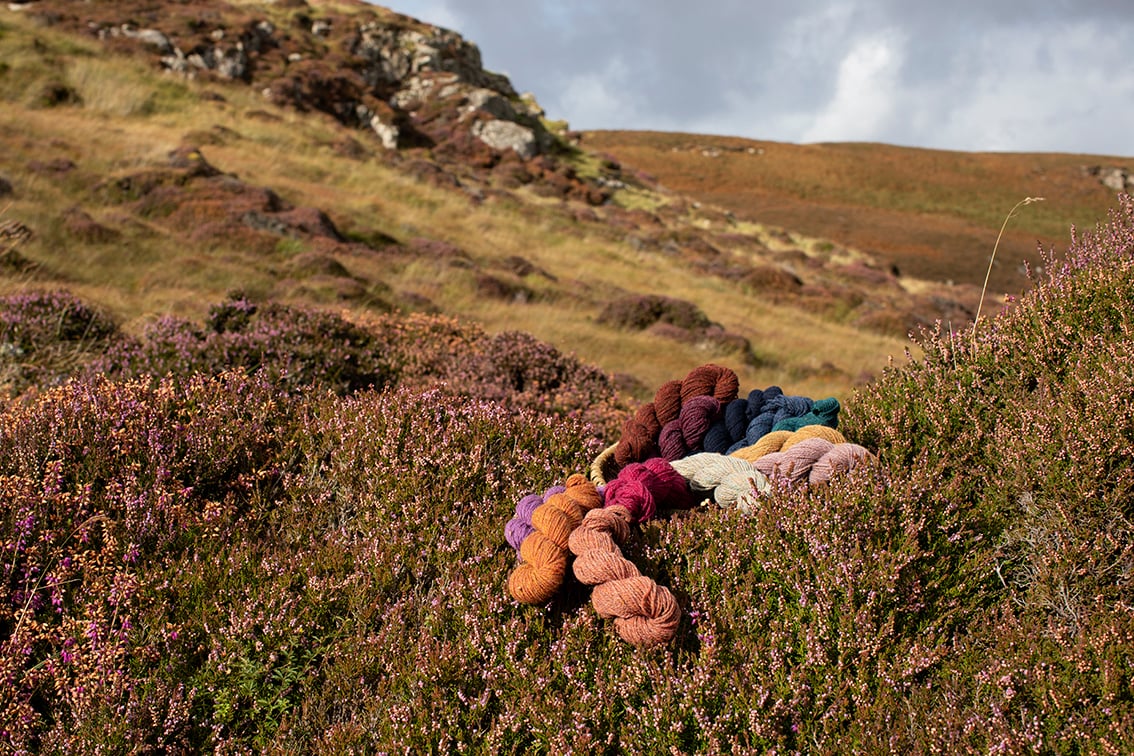
Mrs Mackenzie of Seaforth, whose zeal for the good of her people is conspicuous upon all occasions, has erected two spinning schools, with a salary of £6 Sterling to each of the mistresses. To aid her in this laudable undertaking, the Honourable Society resolved to pay one half of the said salary. The girls are taught gratis, have 10d. for every spindle they spin, and to encourage them, they have their wheels at a low rate; many of the poorest have them gratis. She allows 2lb of coarse lint for themselves to begin with; besides, as a spur to industry and emulation, annual competitions are held, when premiums are given to the best spinners.
So wrote the Rev. Donald Macdonald of the parish of Barvas in the Isle of Lewis. The ‘Mrs Mackenzie’ he referred to is Lady Seaforth, wife of the proprietor of the island. The ‘Honourable Society’ he referred to is the Society For Propagating Christian Knowledge.
The Rev. Alexander Simson of the Lewis parish of Lochs took up the theme:
To encourage the young women to acquire the perfect knowledge of spinning there is an annual competition at each of the (spinning) schools, and premiums given by Mrs Mackenzie to the best performers, for the purpose of exciting a laudable emulation ... The memory of the haughty, and, of course, the cruel-hearted daughters of dissipation, shall be utterly forgotten, or if mentioned, shall be mentioned with abhorrence.
The Rev. Colin Mackenzie of the parish of Stornoway comments on this activity, that:
... many poor girls have been rescued from habits of idleness and vice, and trained to industry and virtue.
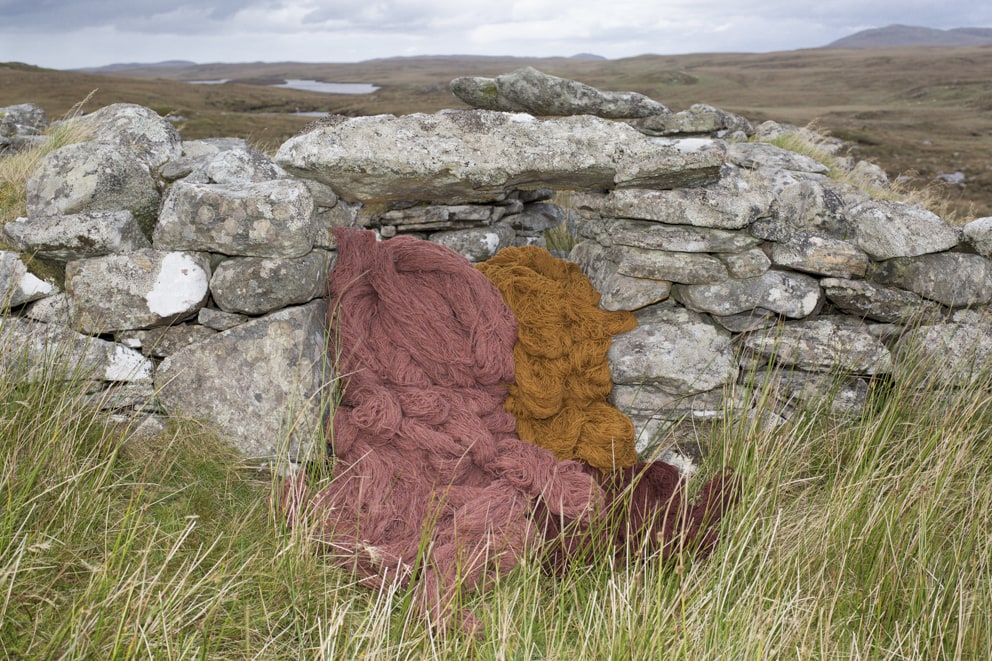
While I don’t entirely believe that my female ancestors were the wild band of girls portrayed, the reverend gentlemen make the point that, daughters of dissipation or no, they certainly did a lot of spinning. Experience and skill in all processes of wool and cloth manufacture are deeply rooted in Hebridean culture, and this tradition eventually set in motion the largest cottage industry in Great Britain – the production of Harris Tweed, which, confusingly, is made not just in Harris but in all islands of the Outer Hebridean chain. Harris Tweed was firmly established by end of nineteenth century, not only as an industry but as a product with historical, social and artistic value. The humble Hebridean plaiding had come a long way. The yarn used in the manufacture of Harris Tweed has a distinctive weaving twist that makes it unsuitable for knitting. The aim of Jade and I was to work within our native Hebridean textile traditions, but to go in a completely new direction – to create a yarn specifically for hand-knitting and stitching. We resolved that we would cut no corners along the way and would use our skills and knowledge to make the ultimate dream yarn for the knitter and stitcher. The starting point was the all-important firm foundation – the sourcing of premium quality pure, new British wool. It was then dyed in the wool and combined into our unique blends inspired by the natural environment of the Hebrides. There are 34 different blends, and, because of the complexity of each shade, the effects of combining them in a design are infinite. They shift and change and glow with life, just like the natural world they represent. Designers will quickly appreciate the potential that is at their fingertips for making dynamic colour combinations.
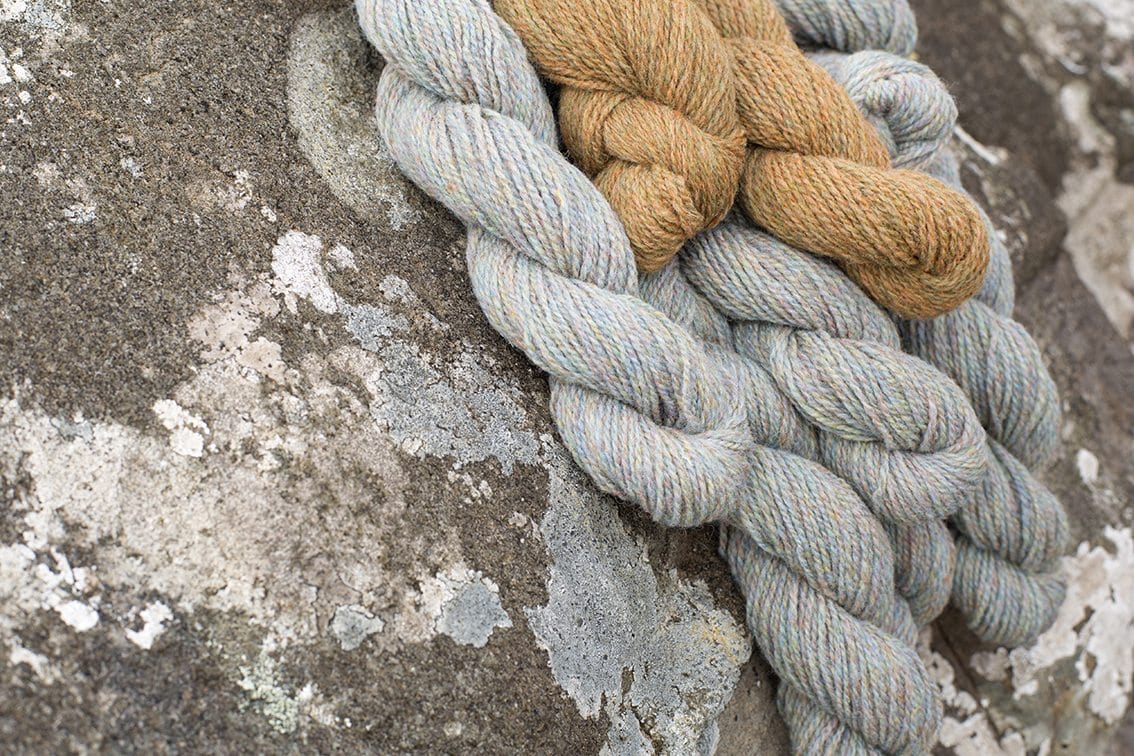
We are closely involved in the production of every batch of our yarn, from the purchase of the raw wool, through to blending, spinning and finishing. We take exceptional care to make our yarn an artisan product. It is hand-washed and dried outside in the open air, right beside the Atlantic. It is also hand-skeined and checked to eliminate knots as much as humanly possible, since we well know – being knitters and stitchers ourselves – how annoying such flaws can be. Each unique shade is available in Alice Starmore Hebridean 2 Ply. A smaller range of shades is available in Alice Starmore Hebridean 3 Ply.
So welcome to our Hebridean world. If you want to know how we developed our unique colour blends then follow on to our Hebridean Colour Stories and start stravaigin. The meaning of that incomparable Scottish word will then become clear.
Alice Starmore
